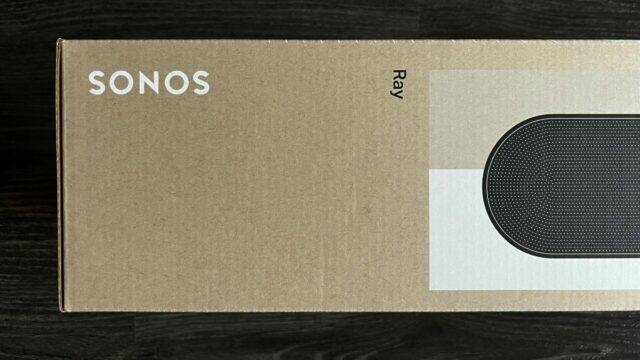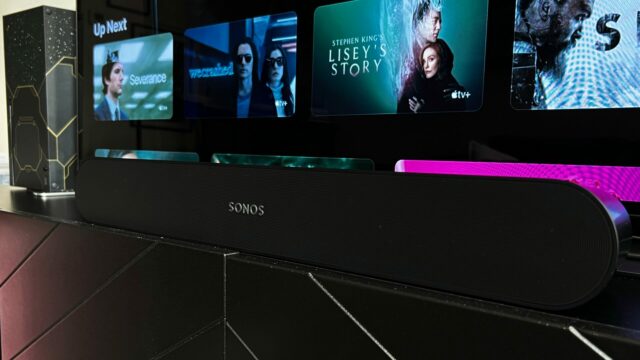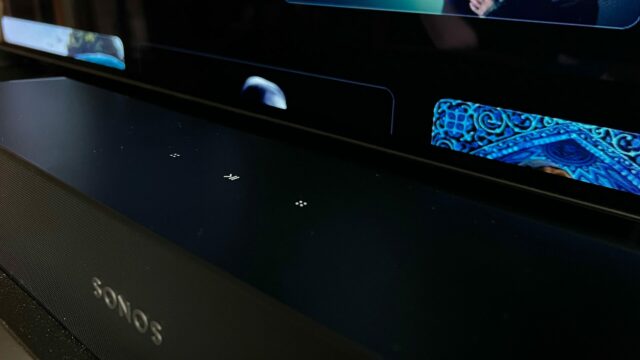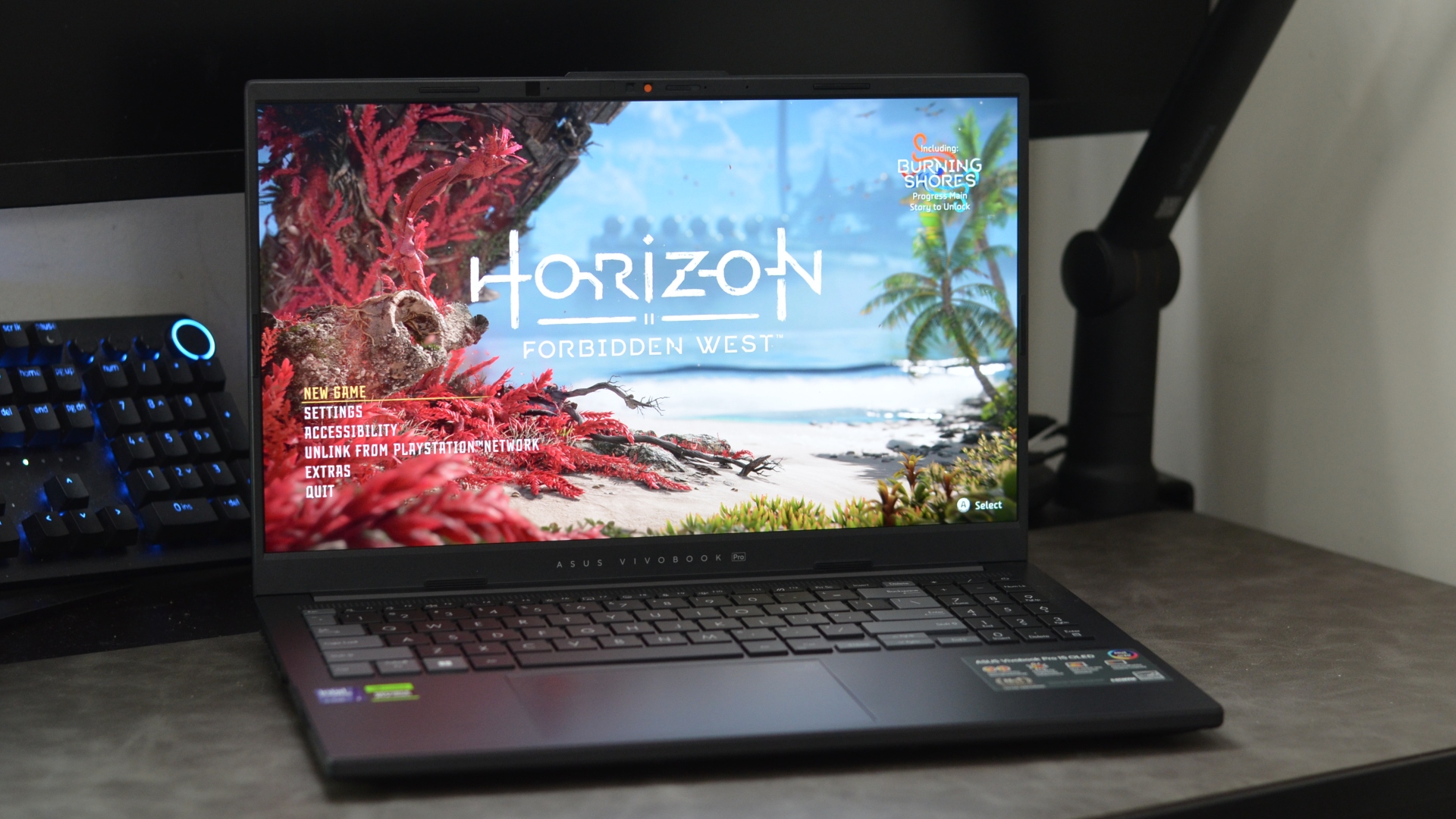
Sonos Ray Soundbar Review (2022)
Sonos is releasing its Sonos Ray soundbar, an entry-level sound system, this week for those looking to upgrade their home entertainment centre. It’s compact, stylish, and provides a relatively fleshed-out audio experience. For its price, it’s hard for the Sonos Ray to garner some attention.
Nowadays, a home entertainment experience is much more than finding a top-of-the-line TV. While many manufacturers can offer a decent enough soundscape from the built-in speakers, nothing compares to what a soundbar can provide. Of course, this typically comes with a hefty price tag on its own.
For those who don’t consider themselves audiophiles but still want a more premium experience, it’s hard to know where to turn. In comes the Sonos Ray.
While searching through retailers in hopes of finding a budget-friendly soundbar, you’ll probably come across the usual suspects of Polk, Sony, and Yamaha. The Sonos Ray also fits into this category with its highly approachable $349.99 CAD price tag.
However, it’s elevated by the sound quality you expect to hear from a Sonos product. It’s also exceptionally easy to use and compact enough to fit in virtually any home entertainment centre. However, the are a few major drawbacks preventing it from being a must-have for anyone who is serious about upgrading their setup.
Out of the box
From the get-go, it’s important to talk about the size of the Sonos Ray. Even the soundbar’s packaging makes it seem like it’s a sizeable sound system. Although Sonos gave us a chance to see the Ray ahead of time, I was still surprised to unpack it and hold it in my hands. The Sonos Ray sizes in at 22 x 2.79 x 3.74 inches and only weighs 4.29lbs.

It’s small and light enough that it can be placed on the top of a media centre, in front of a display. Alternatively, it can be placed on a shelf or even be mounted (Wall Mount Kit sold separately).
Bear in mind that the Ray is a bit tall. You may want to measure the available real estate you have to make sure it doesn’t cut off your display. Luckily, the stand of my LG C1 elevates the display enough that the Ray found a nice home in front.
The Sonos Ray is available in black or white. Personally, I think the matte black blends in better. The white is bold, which could suit a more modern aesthetic. However, it may all come down to personal preference. The rounded edges on both sides of the soundbar are also a novel design choice. The front grill is also stylish and doesn’t come across as cheap despite how much plastic is used in the overall build.
In the box, you’ll surprisingly find very little. Sonos keeps it fairly streamlined, enabling users to set up the soundbar quickly. In the box are a 6ft power supply cord, an optical cable, and an instructional booklet. The rear side of the Sonos Ray houses the optical input, power supply, ethernet and a reset button. Beyond that, the setup of the Ray is all done through the Sonos app available on iOS and Android.
It doesn’t take much to have your Sonos Ray ready to use. The app merely connects the device to your Wi-Fi and ensures the software is up to date. For those adding the Ray to your Sonos ecosystem, you can select which room the Ray is being used in.
Sound experience
Sitting down and using the Sonos Ray, I didn’t know what to expect. The built-in speaker system of the LG C1 has never been a highlight. So I figured that the Sonos Ray would be superior to what the display offers. Though I was curious to see how the Ray would stack up against the LG SP8YA soundbar I use.
What immediately impressed me was how balanced the sound quality of the Ray is. Sonos offers a pair of mid-woofers and two tweeters, featuring custom-designed waveguides to create a soundscape fitting for many different setups. Thanks to how the speakers are positioned, sound can expand and bounce from wall to wall to create this sense of immersion when playing games or watching a movie.

The high frequencies are sharp but not overbearing, especially for a smaller space. The lower frequencies pack a noticeable punch that is well defined. In the middle, the Sonos Ray doesn’t get in the way of dialogue or more subtle audio queues. In fact, that might be one of Sonos Ray’s strengths is its ability to not mute out dialogue, which not every sound system can say.
Between louder action scenes where characters yell over explosions and bullet fire, the dialogue is still discernably recognizable. In softer scenes, when there is nothing but whispers filling the soundbar, these can also be picked up without adjusting the volume. The Sonos Ray never raised the bar on what home entertainment audio could be. Though, for its price range, I was satisfied.
I was surprised, however, by the amount of emphasized bass. While watching Stranger Things Season 4 Volume 1, certain tense moments were elevated thanks to the full bass the Ray offers. Likewise, with all that Bo Burnam put into his Inside (Outtakes), many of the songs sounded great. The music has texture to it and is layered nicely with the vocals in many cases. However, with some of the more synth-ier songs like The Future, the audio was a bit muddled and distorted.
Optical only
Of course, there’s the elephant in the room, which is the lack of Dolby Atmos support. For those that may be purchasing their very first soundbar and aren’t invested in what Dolby Atmos provides, this won’t be the end all be all. However, Atmos support is so common these days that not supporting it on the Ray feels like a major misstep. This is due to not featuring an HDMI port for eARC support.

There are many benefits to supporting eARC beyond Atmos. eARC also provides faster bandwidth and speed from the TV to the receiver. Though, I was delighted to see a noticeable lack in input lag when playing games on Xbox Series X and PlayStation 5. In both cases, there is no recognizable audio lag despite the optical-only support.
Control
The Sonos Ray features universal control, meaning it can automatically sync to your existing TV remote. There’s no additional finicking when adding the Ray to your setup. Controls are also well integrated into the Sonos control app. You can also use the app to stream audio from your favourite streaming services whether it’s Apple Music, Spotify, or others. Apple AirPlay 2 is also supported.

The Sonos Ray app can also be used to set Night Mode on. When active, loud sounds are suppressed while the quieter sounds and dialogue are enhanced so you don’t have to worry as much about the volume. From my experience, it’s quite effective at balancing the
You’ll also find a discernable lack of smart home connectivity. Sonos very much exists in its own ecosystem. Don’t expect to integrate the Sonos Ray into your Google Home setup or have Alexa take commands from you to control volume and playback.
Although the Sonos Ray does not have an onboard display to show settings or volume levels, there is a small LED strip at the top to indicate when it is muted or if there is a disconnect.
Final thoughts
The Sonos Ray is positioned as an entry-level soundbar. With that framework in mind, Sonos is succeeding. Priced at $349, you’d be hard-pressed to find a soundbar that offers a well-balanced, full spectrum of audio that pairs with films and shows. It’s also an exceptional complimentary device for those music-focused users, which is what Sonos is known to cater towards.
However, if you’re investing in premium devices for premium features, the Sonos Ray is outpaced by other manufacturers or even Sonos’ premium Beam soundbar. If you’re looking for that theatre-like experience, the drawbacks in regards to Dolby Atmos and fine-tuning audio settings will likely turn your attention elsewhere.
The Sonos Ray isn’t the soundbar everyone needs this summer. Though if you have invested in a 4K display and are now dipping your toes into what’s next, Sonos should be your very first option.

